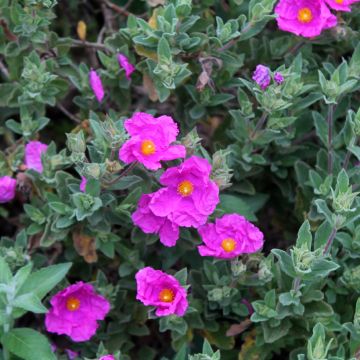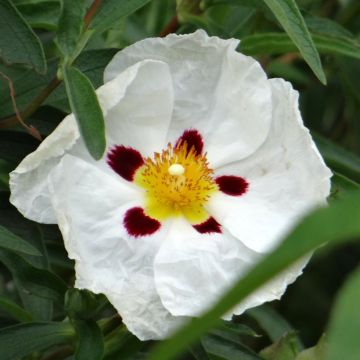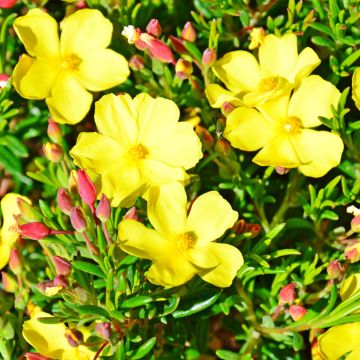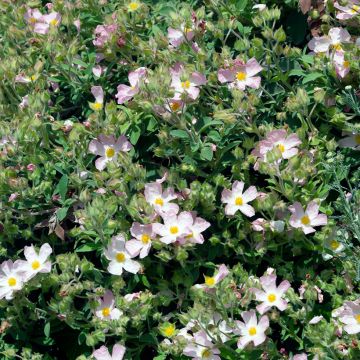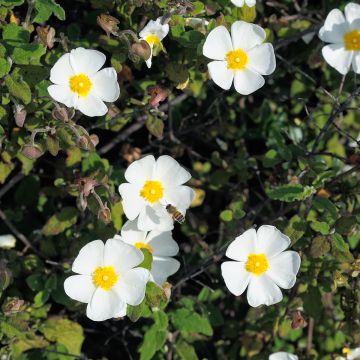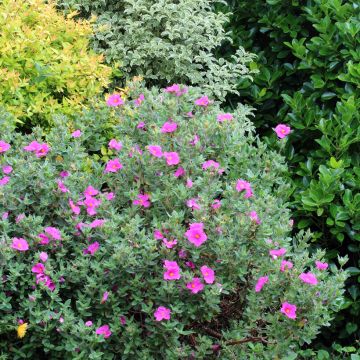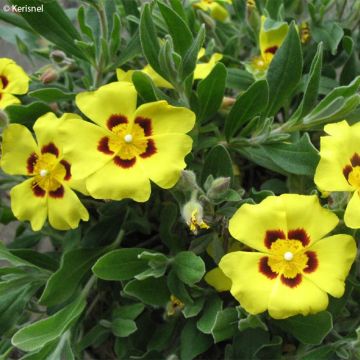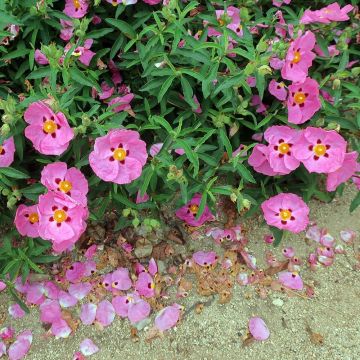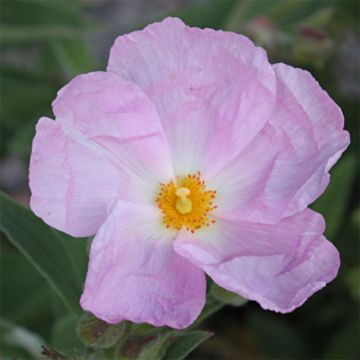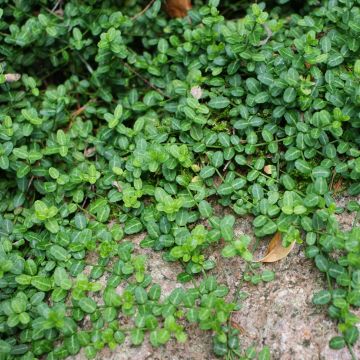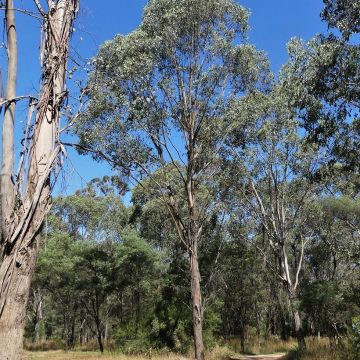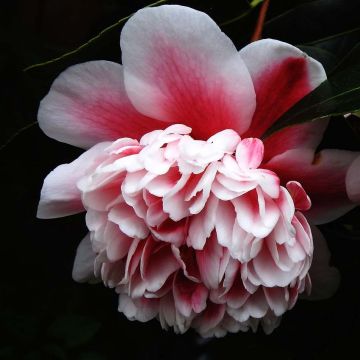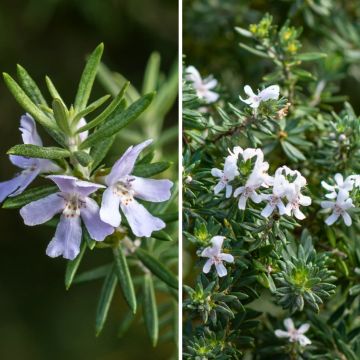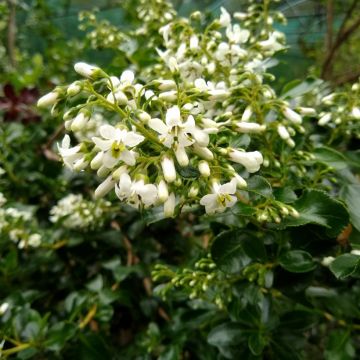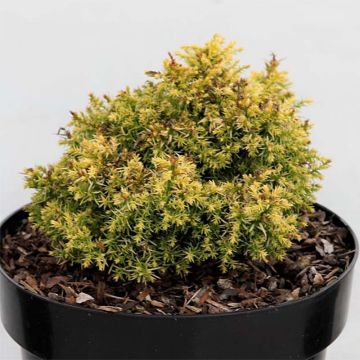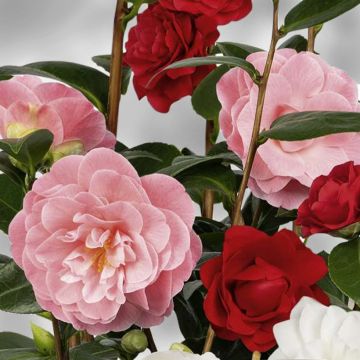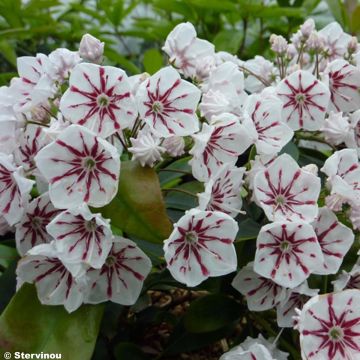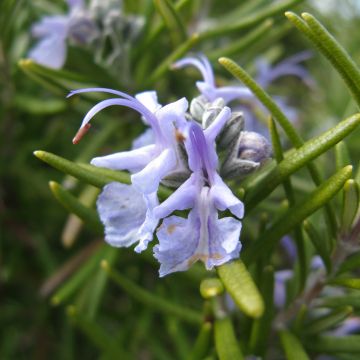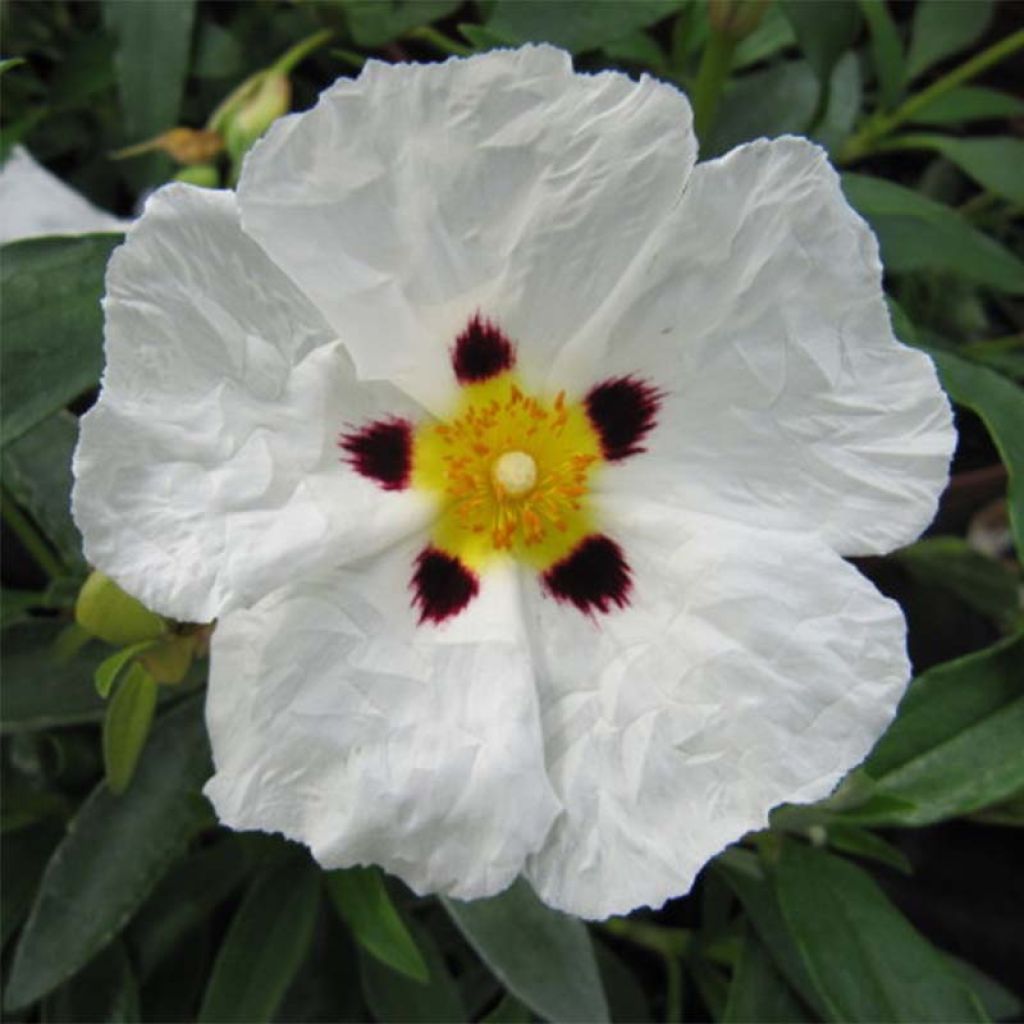

Cistus purpureus Alan Fradd - Rockrose
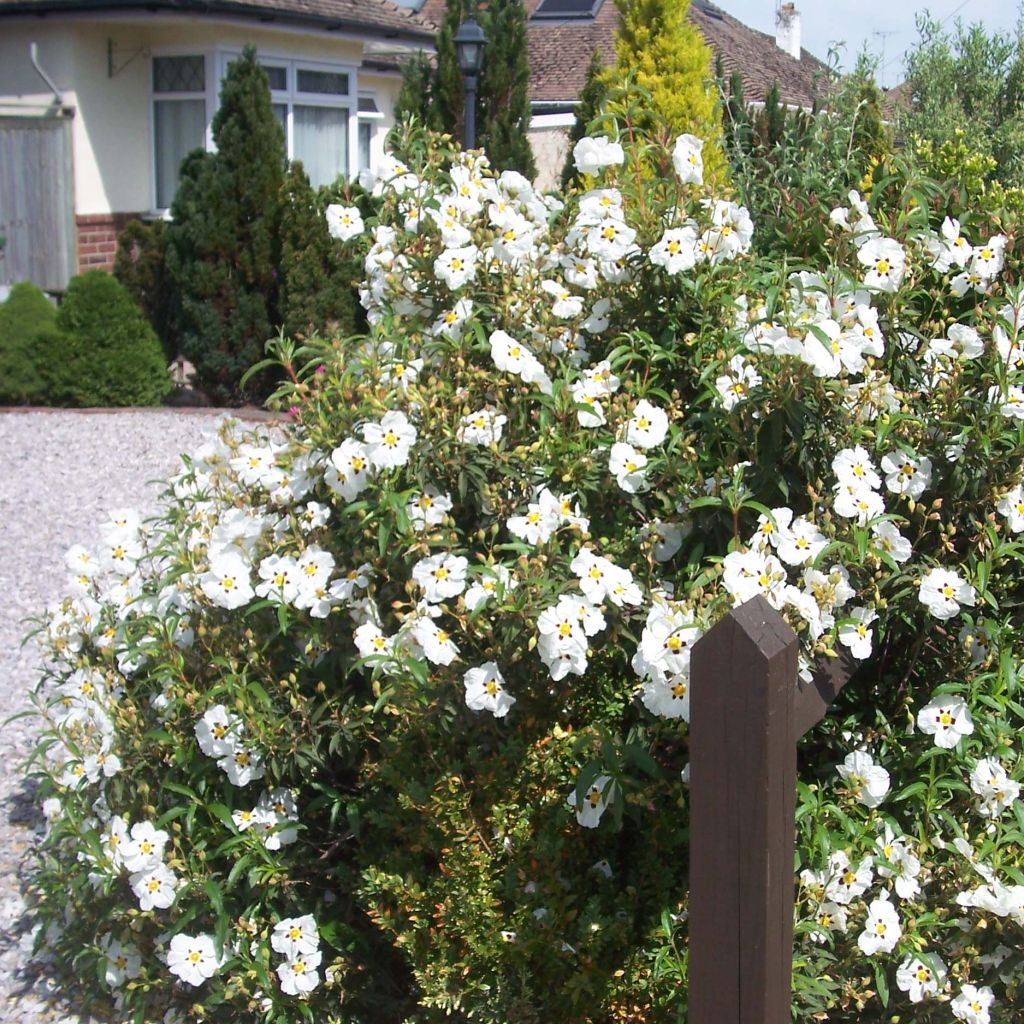

Cistus purpureus Alan Fradd - Rockrose
Cistus purpureus Alan Fradd - Rockrose
Cistus x purpureus Alan Fradd
Rockrose
Very beautiful bush, careful packaging, fast delivery. I am very satisfied, I can't wait for next summer to see the flowering.
annie, 23/11/2022
This item cannot be shipped to the selected country
Delivery charge from €5.90
Delivery to Corse prohibited
More information
Schedule delivery date,
and select date in basket
This plant carries a 24 months recovery warranty
More information
We guarantee the quality of our plants for a full growing cycle, and will replace at our expense any plant that fails to recover under normal climatic and planting conditions.
From €5.90 for pickup delivery and €6.90 for home delivery
Express home delivery from €8.90.
Delivery to Corse prohibited: UE law prohibits the import of this plant from mainland France to Corse as part of the fight against Xylella fastidiosa. Please accept our sincere apologies.
More information

Does this plant fit my garden?
Set up your Plantfit profile →
Description
Cistus x purpureus Alan Fradd is a white-flowered mutation of the purple rockrose, a beautiful evergreen Mediterranean shrub forming a large regular ball. It is covered in fleeting flowers in spring, resembling large white roses adorned with small red-purple spots, contrasting with its dark and curled foliage. This fairly hardy bush is perfectly adapted to drought. Give it a rocky soil and a scorching exposure, so that it perfumes the space on a hot day with its aromatic foliage and intense and complex fragrance.
Cistus x purpureus Alan Fradd is a plant belonging to the cistaceae family, which is found in the wild in the rocky garrigues of the Mediterranean region. It is a natural hybrid between Cistus creticus and Cistus ladanifer, a species from which an aromatic substance, labdanum, is extracted and widely used in perfumery and aromatherapy. This highly branched shrub forms a dense ball of about 1m (3 ft) to 1.25m (4 ft ) in all directions. The flowering occurs before the height of summer from May to June-July, depending on the climate. It bears fleeting flowers with a diameter of 7 to 8 cm (2.8 to 3.1 in), formed by 5 slightly crumpled white petals. The base of each petal is marked with a purple spot, while the heart of the flower is occupied by a bouquet of golden stamens. Each flower disappears in the late afternoon, releasing a shower of petals on the ground. But the buds are numerous, ensuring that flowering lasts for 3 weeks. The flowering gives way to fruits that open towards the sky, like small baskets filled with seeds. Its leaves are evergreen, elongated, dark green, sticky and fragrant in hot weather. This very penetrating fragrance is a blend of amber, balsamic, spicy and woody notes. The root system of this rockrose is both deep and branched, it is so powerful that it manages to penetrate between fractured rocks to draw the slightest trace of moisture from deep down. The lifespan of this variety is about 10 to 12 years, in poor soil.
The purple rockrose Alan Fradd is a plant for rock gardens, limestone plateaus and poor soils, remarkably drought-tolerant and essential in a dry garden: its delicate flowers hide a strong temperament and resilience to any test. Create a bed by mixing the foliage and scents of lavender (blue, white, pink), rosemary (creeping or erect), thyme (T.vulgaris, T. polytrichus), sage (Salvia x jamensis or officinalis), oregano, teucriums (T.chamaedrys, T. x lucidrys, T. hircanicum), California poppies, catmints, ballotes and dryland euphorbias (E.characias, E. cyparissias). Growing in large pots is possible, by ensuring good drainage and providing abundant but infrequent waterings in summer, allowing the substrate to dry between waterings. 'Alan Fradd' and its usual form with pinkish-purple flowers will enhance each other on a large slope or in a rocky bed.
Report an error about the product description
Cistus purpureus Alan Fradd - Rockrose in pictures
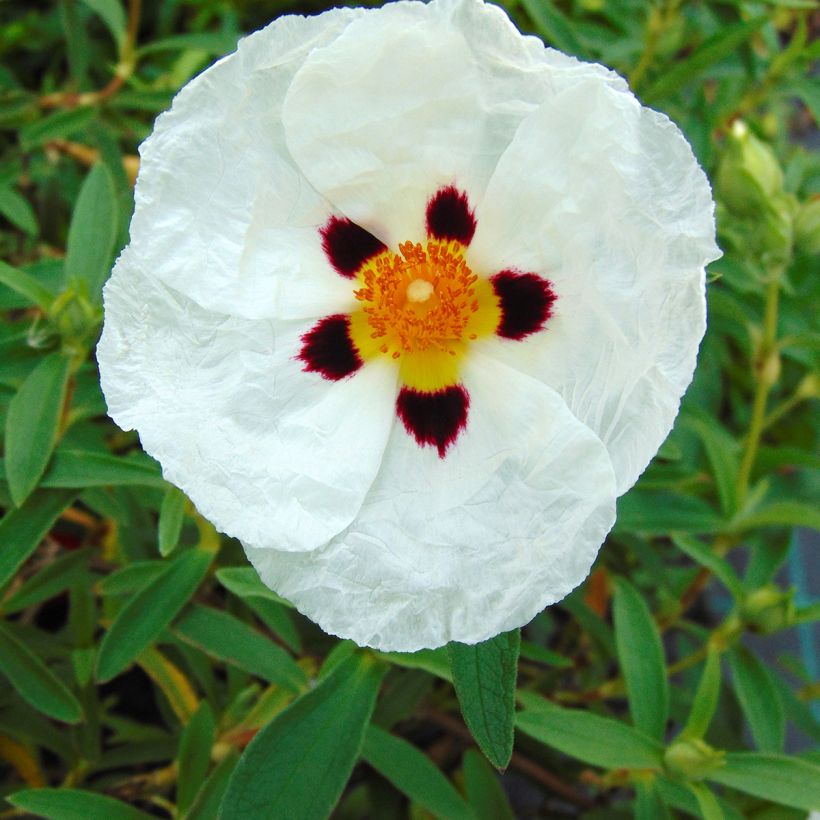

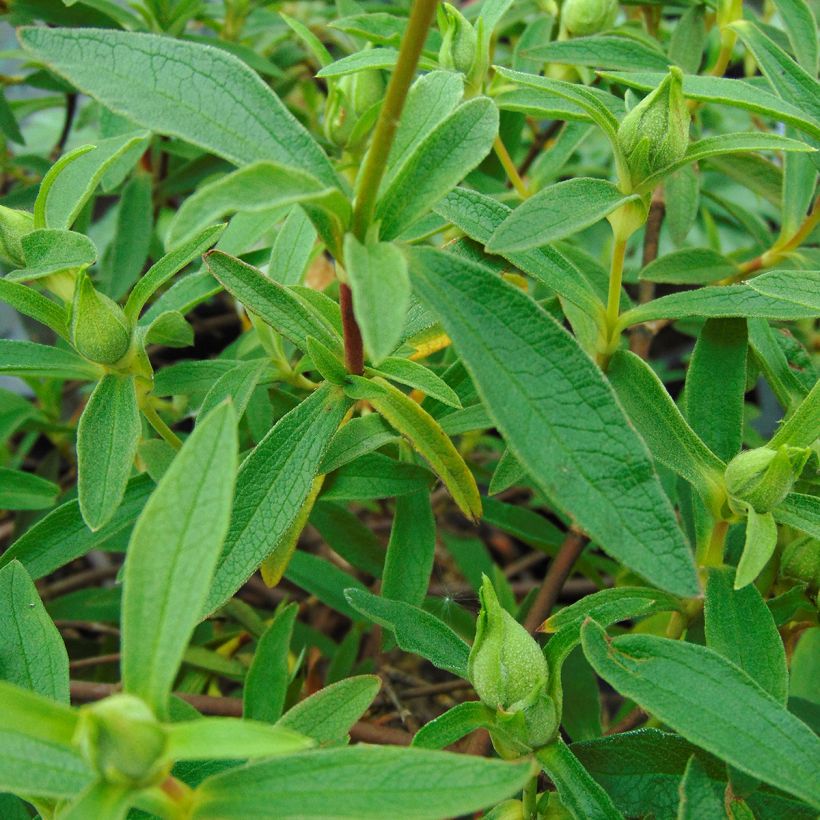

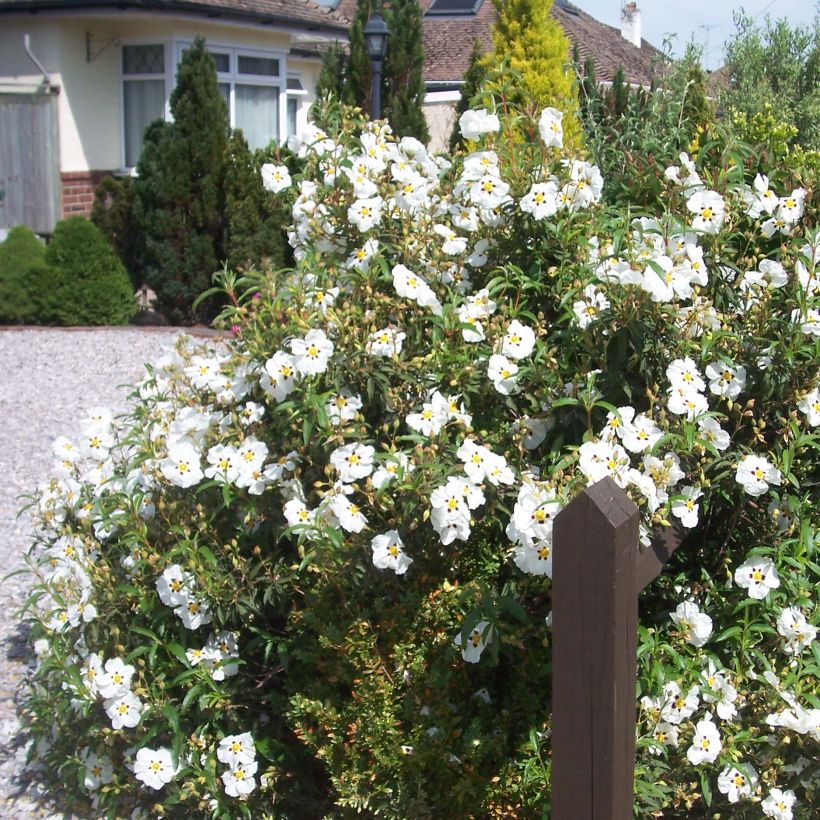

Plant habit
Flowering
Foliage
Botanical data
Cistus
x purpureus
Alan Fradd
Cistaceae
Rockrose
Mediterranean
Other Cistus - Rockrose
Planting and care
Cistus purpureus Alan Fradd requires a perfectly drained, rocky or sandy, poor, even slightly chalky, soil. Plant it after the last frost in the north and in September-October in hot and dry climates. It cannot thrive without sunlight and likes to have warm roots in poor soil. Under these conditions, it is hardy down to -10 or -12°C (14 or 10.4 °F) and will live longer. Mulch it in winter in the coldest regions and protect it from the cold as much as possible. Place it in the warmest corner of the garden, in full sun against a south-facing wall, in a rocky or sandy slope and any substrate that does not retain moisture, which would be fatal to it in winter or summer, which is its vegetative rest period. The combination of heat and humidity leads to the development of a fungus that attacks the collar of the plant and will be fatal to it. You can cut back the stems after flowering to encourage the plant to branch out. However, avoid severe pruning. This cistus can be propagated by semi-ripe cuttings in autumn. Parasites do not bother this well-armed aromatic plant.
Planting period
Intended location
Care
-
, onOrder confirmed
Reply from on Promesse de fleurs
Evergreen shrubs
Haven't found what you were looking for?
Hardiness is the lowest winter temperature a plant can endure without suffering serious damage or even dying. However, hardiness is affected by location (a sheltered area, such as a patio), protection (winter cover) and soil type (hardiness is improved by well-drained soil).

Photo Sharing Terms & Conditions
In order to encourage gardeners to interact and share their experiences, Promesse de fleurs offers various media enabling content to be uploaded onto its Site - in particular via the ‘Photo sharing’ module.
The User agrees to refrain from:
- Posting any content that is illegal, prejudicial, insulting, racist, inciteful to hatred, revisionist, contrary to public decency, that infringes on privacy or on the privacy rights of third parties, in particular the publicity rights of persons and goods, intellectual property rights, or the right to privacy.
- Submitting content on behalf of a third party;
- Impersonate the identity of a third party and/or publish any personal information about a third party;
In general, the User undertakes to refrain from any unethical behaviour.
All Content (in particular text, comments, files, images, photos, videos, creative works, etc.), which may be subject to property or intellectual property rights, image or other private rights, shall remain the property of the User, subject to the limited rights granted by the terms of the licence granted by Promesse de fleurs as stated below. Users are at liberty to publish or not to publish such Content on the Site, notably via the ‘Photo Sharing’ facility, and accept that this Content shall be made public and freely accessible, notably on the Internet.
Users further acknowledge, undertake to have ,and guarantee that they hold all necessary rights and permissions to publish such material on the Site, in particular with regard to the legislation in force pertaining to any privacy, property, intellectual property, image, or contractual rights, or rights of any other nature. By publishing such Content on the Site, Users acknowledge accepting full liability as publishers of the Content within the meaning of the law, and grant Promesse de fleurs, free of charge, an inclusive, worldwide licence for the said Content for the entire duration of its publication, including all reproduction, representation, up/downloading, displaying, performing, transmission, and storage rights.
Users also grant permission for their name to be linked to the Content and accept that this link may not always be made available.
By engaging in posting material, Users consent to their Content becoming automatically accessible on the Internet, in particular on other sites and/or blogs and/or web pages of the Promesse de fleurs site, including in particular social pages and the Promesse de fleurs catalogue.
Users may secure the removal of entrusted content free of charge by issuing a simple request via our contact form.
The flowering period indicated on our website applies to countries and regions located in USDA zone 8 (France, the United Kingdom, Ireland, the Netherlands, etc.)
It will vary according to where you live:
- In zones 9 to 10 (Italy, Spain, Greece, etc.), flowering will occur about 2 to 4 weeks earlier.
- In zones 6 to 7 (Germany, Poland, Slovenia, and lower mountainous regions), flowering will be delayed by 2 to 3 weeks.
- In zone 5 (Central Europe, Scandinavia), blooming will be delayed by 3 to 5 weeks.
In temperate climates, pruning of spring-flowering shrubs (forsythia, spireas, etc.) should be done just after flowering.
Pruning of summer-flowering shrubs (Indian Lilac, Perovskia, etc.) can be done in winter or spring.
In cold regions as well as with frost-sensitive plants, avoid pruning too early when severe frosts may still occur.
The planting period indicated on our website applies to countries and regions located in USDA zone 8 (France, United Kingdom, Ireland, Netherlands).
It will vary according to where you live:
- In Mediterranean zones (Marseille, Madrid, Milan, etc.), autumn and winter are the best planting periods.
- In continental zones (Strasbourg, Munich, Vienna, etc.), delay planting by 2 to 3 weeks in spring and bring it forward by 2 to 4 weeks in autumn.
- In mountainous regions (the Alps, Pyrenees, Carpathians, etc.), it is best to plant in late spring (May-June) or late summer (August-September).
The harvesting period indicated on our website applies to countries and regions in USDA zone 8 (France, England, Ireland, the Netherlands).
In colder areas (Scandinavia, Poland, Austria...) fruit and vegetable harvests are likely to be delayed by 3-4 weeks.
In warmer areas (Italy, Spain, Greece, etc.), harvesting will probably take place earlier, depending on weather conditions.
The sowing periods indicated on our website apply to countries and regions within USDA Zone 8 (France, UK, Ireland, Netherlands).
In colder areas (Scandinavia, Poland, Austria...), delay any outdoor sowing by 3-4 weeks, or sow under glass.
In warmer climes (Italy, Spain, Greece, etc.), bring outdoor sowing forward by a few weeks.

































